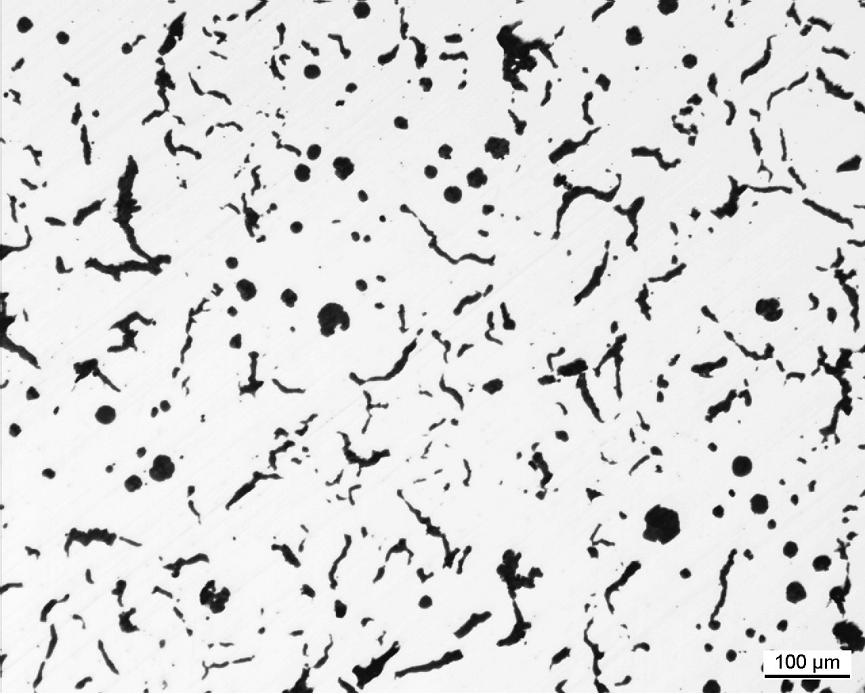Compact graphite iron, also known as vermicular iron, shows an intermediate ductility, strength and thermal conductivity between ductile and grey iron. Those especial properties give rise to use this material for applications where it is essential to extract thermal energy with some strength and ductility, as motor housings, exhaust manifolds, brake disk for wind mills, etc.
In spite of knowing this alloy since long, it has never been in the mind of engineers, due to the lack of reliable process control methodologies that guarantee structural and physical properties homogeneity in the castings. This reason has triggered customers to prefer any other cast iron grade.
The no successfulness of compact graphite iron is related to the own variations of the production processes. Usually, this quality is made like ductile iron: some Mg or Ce is added to the melt as nodulizer and also any graphite degenerate promoter can be added, as Ti or S.

The vermicular rate depends on the balance of the different graphite shape modifiers (Mg, Ce, S, Ti, Al, O, etc.), cooling rate and nucleation ability of the melt. The variations in the yield of the additions, together with the narrow ranges allowed for the combination of those elements, and the uncertainty of the chemical composition analysis devices, drive to a great scrap production due to customer standards non fullfilment.
Azterlan has developed an application for its thermal analysis system Thermolan®, based on the recording of different cooling curves obtained from standard samples (cups), which allows to predict in real time and in an easy, fast and reliable way the vermicular rate in any area of the real casting being produced at that time. The goal has been the increase of the accomplishment on this alloy production.
This technique can be used to characterize the nucleation and growth of the graphite and reveal if it fulfils the final desired graphite shape (even before cast any mould). Furthermore, it enables the knowledge of the production process deviations, the corrective actions to be taken to adjust the metal to the standards, the no scrap production and the consequently cost savings.
This control methodology can be used in any production process layout (manual, semiautomatic and automatic pouring) or treatment (Mg, Mg+Ti, Ce) used nowadays, and it guarantees at every moment the customer requirements eagerness about physical properties homogeneity, and therefore, opening a potential market for the foundries.